
12 Foods You Should Eat Every Day to Combat Common Health Concerns
12 Foods You Should Eat Every Day to Combat Common Health Concerns We all have a complicated relationship with food. Sometimes, it’s a source of
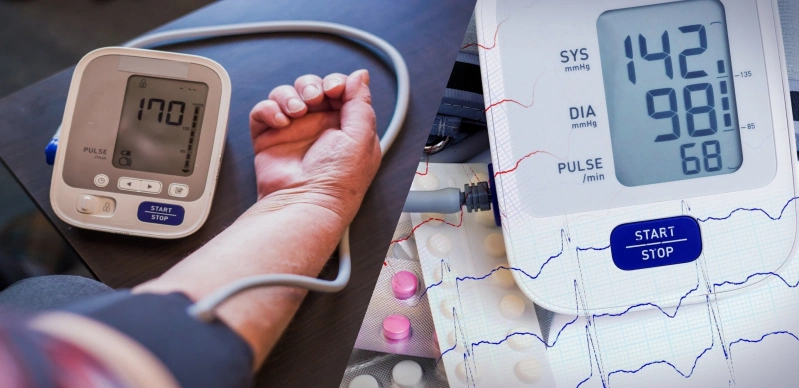
Remote blood pressure monitoring devices have been making waves as the leading cutting-edge technology in healthcare. Specifically designed to enable remote patient monitoring, these devices allow for continuous blood pressure tracking and ensure that any sudden changes are detected quickly. This is particularly beneficial for patients with chronic conditions or those who require frequent medical attention, such as hypertension.
In this guide, we will explore what is a remote blood pressure monitor device, how it works, and its various uses.
Remote blood pressure monitoring devices (also known as telehealth devices or home health monitoring systems) are medical devices that capture and transmit data related to an individual’s blood pressure. This data is sent to the patient’s healthcare provider, doctor, or nurse for review and analysis.
These remote devices are battery-powered and typically come in two forms:
There are a variety of remote blood pressure monitoring devices available on the market. These range from armband monitors to wrist cuff-based devices, as well as cloud-based systems and smartphone applications.
Following are some of the most popular remote blood pressure monitoring devices:
iHealth Wireless Blood Pressure Monitor is an FDA-approved, pocket-sized device that measures your blood pressure and transmits the data to your smartphone via Bluetooth. This monitor is designed for personal use and can be used to track changes in your blood pressure over time.
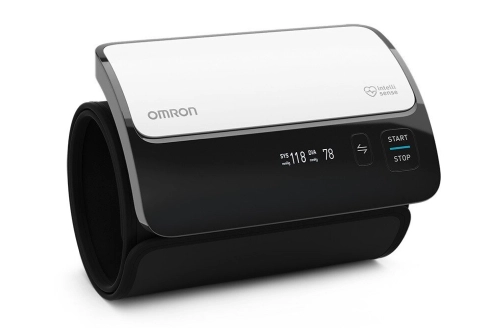
ForaCare Voice Blood Pressure Monitor is a voice-controlled device that monitors your blood pressure and transmits the data directly to your healthcare provider via Bluetooth. This device includes a shockproof cuff, which makes it easy to use in any environment.
This device also has a built-in speaker, allowing the user to hear their readings directly.
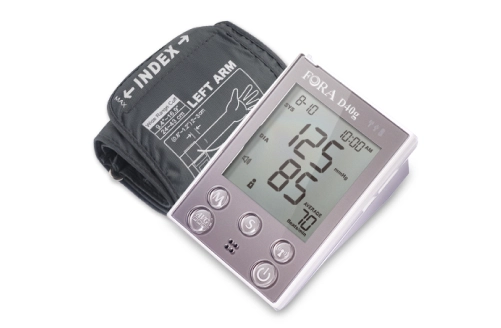
Wellue Blood Pressure Monitor is a cloud-based device that can be used to monitor an individual’s blood pressure from anywhere. This device syncs with a smartphone app, allowing users to check their readings on the go. Additionally, the Wellue app also offers real-time insights and data analysis capabilities.
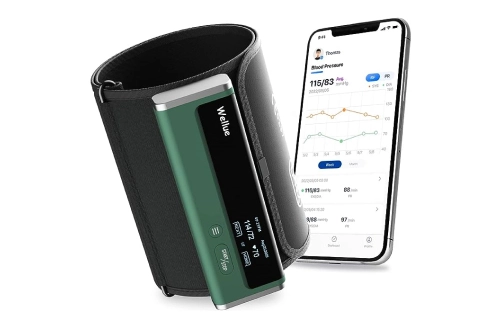
There are many new digital devices that have been designed to monitor blood pressure remotely. These include smart watches, fitness trackers, and activity monitors with built-in blood pressure tracking capabilities.
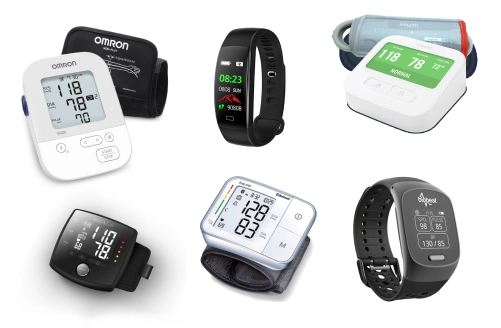
Remote monitoring blood pressure devices have a number of applications in medical settings. Most commonly, these devices are used to monitor hypertension or pre-hypertension – conditions that require long-term tracking in order to determine the best course of action.
Additionally, they are used for monitoring blood pressure levels in pregnant women and to detect any signs of complications such as preeclampsia or eclampsia. Furthermore, these devices can also be used to diagnose and monitor heart conditions such as coronary artery disease (CAD) and arrhythmias.
When it comes to blood pressure monitoring, there is a distinction between remote and traditional methods. Traditional methods involve manually measuring in a medical setting with the help of a stethoscope or sphygmomanometer (a manual device), while remote methods are automated and are used at home.
Remote blood pressure monitoring devices offer a much more convenient and accurate option, as they can be used at any time of the day with minimal effort. Unlike manual devices, these automated systems also have features such as memory storage and automatic data transfer that make long-term monitoring easier than ever.
A remote blood pressure monitoring device works by taking readings from both systolic (the higher number) and diastolic (the lower number) blood pressure measurements. These readings are then transmitted to a medical professional or healthcare provider via the device’s Bluetooth connection or USB cable.
The device is activated by pressing a button and then inflating the cuff around the patient’s arm with pressurized air to take a reading. The cuff will slowly release the air while taking the systolic and diastolic readings. Once the readings are taken, they are analyzed and stored in the device’s memory for future reference.
Following are some of the factors that affect blood pressure readings:
Remote blood pressure monitoring devices offer a plethora of benefits for patients and healthcare providers alike. By allowing individuals to track their blood pressure levels remotely, these devices enable people with chronic conditions such as hypertension to stay on top of their health without having to make frequent trips to the doctor.
Moreover, these devices of remote pressure monitoring provide medical professionals with access to real-time data that can be used to make informed decisions about a patient’s health. This allows for more accurate diagnosis and treatment of various heart conditions, as well as quicker response times in case of emergency.
Finally, remote patient monitoring blood pressure is significantly cheaper than traditional methods of healthcare delivery – making them an affordable solution for both patients and healthcare providers.
Telehealth blood pressure monitors are the next generation of remote patient monitoring systems. These devices use advanced algorithms and artificial intelligence (AI) to identify any potential issues with blood pressure as soon as they occur, thereby allowing for quicker diagnosis and treatment.
Furthermore, telehealth BP monitors also come with features such as voice-activated reminders and automated self-monitoring tools. This makes it easier for individuals to keep track of their health without having to worry about manually logging their readings.
Telehealth blood pressure monitor works by connecting to the user’s smartphone, which in turn sends the readings to a designated healthcare provider. This allows for real-time monitoring and response from medical professionals.
Remote blood pressure monitoring systems offer a number of benefits for users, medical professionals, and the healthcare system as a whole. By allowing individuals to regularly monitor their BP levels from home, these devices can help reduce hospital visits and emergency room trips – thus saving both time and money.
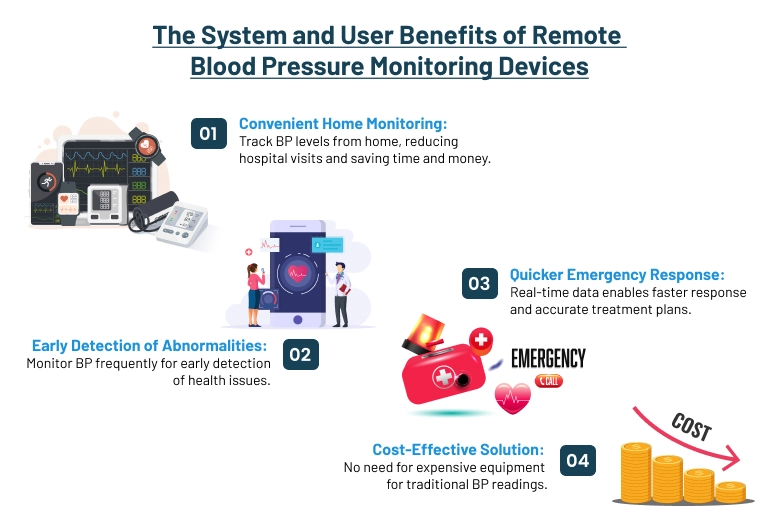
Remote blood pressure monitoring devices are an invaluable tool for both patients and healthcare providers. They provide individuals with the ability to consistently monitor their health from home while also giving medical professionals access to accurate real-time data that can be used for diagnosis and treatment decisions.
Although there are a number of factors to consider when purchasing a device – such as accuracy, compatibility, and cost – the user benefits of blood pressure monitor systems make them an invaluable tool for any healthcare setting.
Get in touch with Global CCM today to learn more about the benefits of remote blood pressure monitoring systems. Our team would be happy to help you find the right device for your needs!
If you’re seeking efficient solutions for remote patient blood pressure monitoring, don’t give up on implementing these essential programs. Reach out to us at Global RPM to access user-friendly devices and streamline your monitoring services effectively. Together, we can enhance patient care and health outcomes through remote monitoring technology.

12 Foods You Should Eat Every Day to Combat Common Health Concerns We all have a complicated relationship with food. Sometimes, it’s a source of
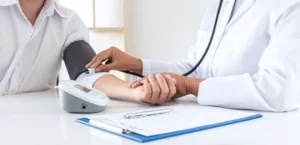
Understanding What is White Coat Syndrome and Why This Happens Did you know that a significant number of people experience a temporary spike in blood
Talk to an Expert Now